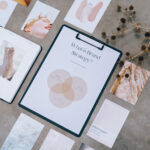As a child, did you wake up to see those newspaper ads of Cadbury and Pepsi and felt tempted to buy them on your way to school or classes? Or for that matter, after you grew up to earn your own stipend, saw a stunning ad of a photo captured by an iPhone, and decided to blow up all your money on buying the phone?
Brands put a lot of hard work into creating such deeply connecting photos that create a space for themselves in the minds and hearts of their audience. If you are a budding photographer and want to work for brands to create such captivating photos, this blog is meant just for you!
Shooting for brands means shooting to capture – not just the product (or service) but to attract and retain the audience’s attention. This can happen when the photo not just tells a story, but well, shows a story. What’s the difference you ask?
A SWOT analysis that looks at the company’s strengths,In this Nike ad, can you see how the photo featuring James Harden almost ‘shows’ how it is possible to speed with its ‘cutting edge’ shoes? The photo uses animation to not just tell that its product is meant for ‘targeted quickness to accelerate your workout’ but it quite literally shows too. Now, how does one get to this level where one can create and maintain a distinct identity of the brand? Here are 6 tips for any photographer wanting to exceed client’s expectations while shooting for brands. Without further ado, let’s have them unveiled!
Walter Landor, the founder of brand consulting firm Landor said once, “Products are created in the factory but brands are created in the mind.”
In order to create such brands that resonate with people, it is important to make the branding exercises connect. One way to help audiences build that connect is to ensure consistency so that brands don’t come across as strangers to them. And, what better way to maintain that consistency than having a consistent color palette?
So, the first thing any photographer must keep in mind is to understand the color palette and the values, feelings and reasoning behind the colors. This will make it easy to create mood boards and story boards for the photoshoot.
Once the mood board is prepared with the given colour palette, it is important to plan the entire production in terms of what aesthetics or props will go with brand and how to plan the lights and elevation.
For this, one needs to develop a deeper understanding of the color palette and see which colors can blend with the product for complementing or contrasting it.
Brands often aim at eliciting some or the other emotion in the customer. The success of the photographer then depends on how well can the photo help in arousing those emotions.
So, as a photographer know the point, that is, know the emotion which you want to provoke. Do want your customers to feel tempted to scoop out and eat up the Belgium dark chocolate ice-cream right from the photo? If you are shooting for a garment brand, do you want to make your audience feel a sense of being smart and well-dressed? Understanding the emotional triggers beforehand help you in the planning the shoot backwards. And obviously, once the purpose is clear beforehand, the outcome can be far more focused.
Just like how you dress depends on where you are going, shooting much depends on where and which kind of people are going to feast on that photo. Not clear? Let me help you. Now, if the photo is going to be used for an e-commerce portal, the backdrop, the size of the backdrop will be different than if the photo was going for a magazine cover. Similarly, if the photo is going to be put up as an ad banner somewhere outside the mall or a highway or an important junction, the dimensions of photo will have to be different. Since this is a technical part, we’ll have a relook in one of the workshops and webinars I intend to take.
In the course of my career, one important lesson in work ethic that I have learnt is to make client’s work as hassle-free and easy as possible. And one way, you can do that is to make sure that the final shots are given to the client in an organized way. Most of the times art directors have a final say in terms of which work should be finally used. So, you and they gain a lot by making the files easy to read, self-descriptive and systematically ordered.
And here is the last but an important point to remember. Since the photos will be viewed by different people in different gadgets and different screens with different visual configurations, your blue becomes purple to some one else in their screen and your black becomes navy blue to some other. So, the solution is to make the work picture perfect in such a way that your shade of blue comes out exactly as that and only that shade of blue to anybody viewing it. This too requires an advanced training which I cover in my many fun-filled and at the same time, highly exclusive workshops.
Well folks! Here I have shared with you some of the rarely known tricks-of-the-trade for helping brands craft a niche identity for themselves.






